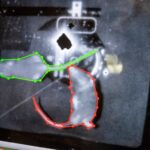Learning outcomes are the desired knowledge, skills, and attitudes students should acquire, whether from a specific lesson or an entire course. A key framework for defining and achieving these outcomes is a taxonomy for teaching, learning, and assessment, often referred to as Bloom’s Taxonomy. This framework helps educators structure their teaching to effectively facilitate student learning and develop appropriate assessment methods.
Figure: Bloom’s Revised Taxonomy
Utilizing Bloom’s Taxonomy in Education
A taxonomy for teaching, learning, and assessment, like Bloom’s, provides educators with a structured approach to understanding cognitive development and designing effective instruction. It allows teachers to:
- Organize Learning Objectives: Bloom’s Taxonomy categorizes learning objectives into a hierarchy of cognitive complexity, ranging from basic recall to higher-order thinking skills like creating and evaluating. This hierarchical structure facilitates the sequencing of instruction, ensuring that foundational knowledge is established before moving to more complex concepts.
- Develop Measurable Outcomes: The taxonomy encourages the development of specific, measurable, achievable, relevant, and time-bound (SMART) learning outcomes. This clarity enables both teachers and students to understand the expectations for learning and progress.
- Align Instruction and Assessment: By categorizing learning objectives, Bloom’s Taxonomy helps align teaching methods and assessment strategies with the desired level of cognitive complexity. For example, lower-level objectives like remembering facts might be assessed through multiple-choice quizzes, while higher-level objectives like analyzing or creating could be assessed through projects or essays.
- Facilitate Curriculum Mapping: The framework provides a common language for educators to discuss and map curriculum across grade levels or courses, ensuring continuity and progression in learning. This common understanding also aids in aligning curriculum with standardized testing requirements.
The Evolution of Bloom’s Taxonomy: A Two-Dimensional Approach
The original Bloom’s Taxonomy focused primarily on the cognitive domain. The revised taxonomy, developed by Anderson and Krathwohl (2001), introduced a two-dimensional framework encompassing both cognitive processes (verbs) and knowledge dimensions (nouns). This revision reflects a more nuanced understanding of learning and cognition.
The knowledge dimension is now categorized into four types:
- Factual Knowledge: Basic information, terminology, and details essential to a subject area.
- Conceptual Knowledge: Understanding the relationships between different pieces of factual knowledge, including classifications, principles, theories, and models.
- Procedural Knowledge: Knowing how to do something, encompassing skills, algorithms, techniques, and methods of inquiry.
- Metacognitive Knowledge: Awareness and understanding of one’s own cognitive processes, including learning strategies and self-reflection.
Applying the Revised Taxonomy: An Example
Consider a lesson on photosynthesis. Using a taxonomy for teaching, learning, and assessment, a teacher might develop the following learning objectives:
- Remembering: Students will be able to define photosynthesis and list the reactants and products.
- Understanding: Students will be able to explain the process of photosynthesis in their own words.
- Applying: Students will be able to predict how changes in light or carbon dioxide levels would affect photosynthesis.
- Analyzing: Students will be able to compare and contrast different types of photosynthesis.
- Evaluating: Students will be able to critique a scientific article about photosynthesis.
- Creating: Students will be able to design an experiment to test a hypothesis about photosynthesis.
:max_bytes(150000):strip_icc()/GettyImages-182893813-5c40e32cc9e77c00010d6c2b.jpg)
Figure: Photosynthesis Process
Conclusion
A taxonomy for teaching, learning, and assessment provides a valuable framework for educators to design effective instruction, develop measurable learning outcomes, and align teaching with assessment. Bloom’s revised taxonomy, with its emphasis on both cognitive processes and knowledge dimensions, offers a comprehensive approach to fostering student learning and promoting higher-order thinking. By understanding and applying this taxonomy, educators can create engaging and impactful learning experiences for their students.
References:
Bloom, B. S. (1969). Taxonomy of educational objectives: The classification of educational goals : Handbook I, Cognitive domain. New York: McKay.
Anderson, L. W., Krathwohl, D. R., & Bloom, B. S. (2001). A taxonomy for learning, teaching, and assessing: A revision of Bloom’s taxonomy of educational objectives. New York: Longman.
